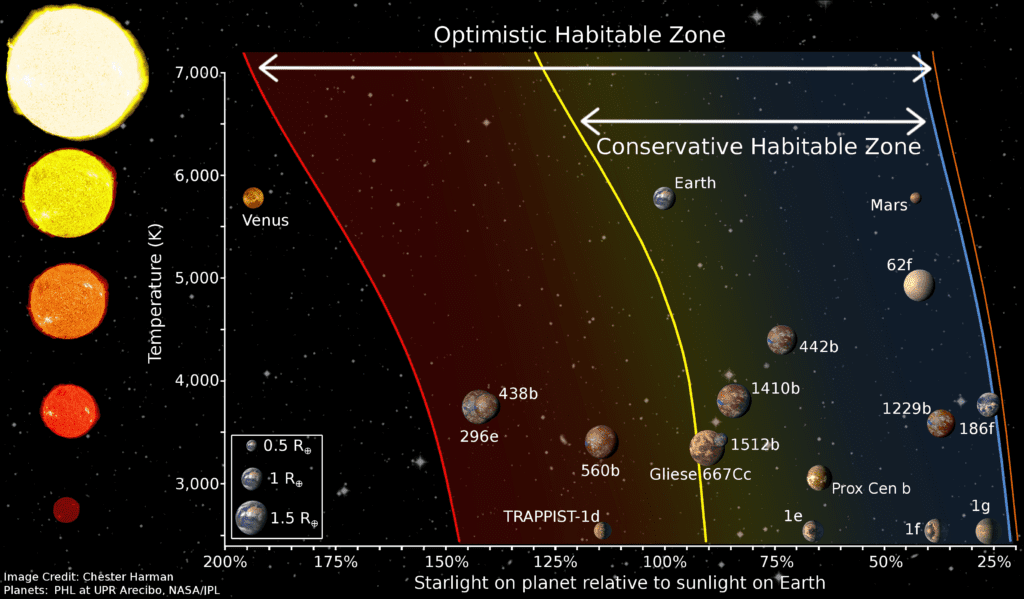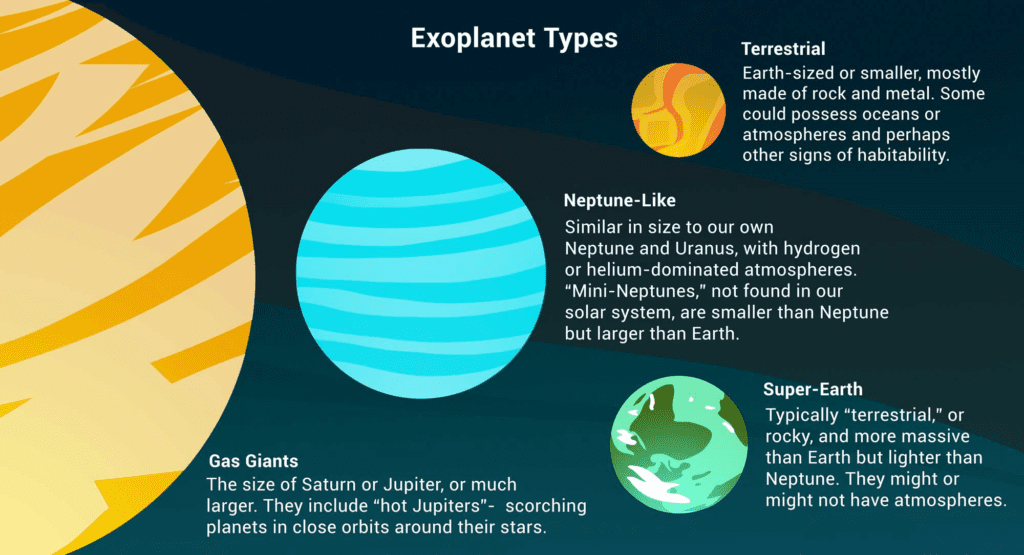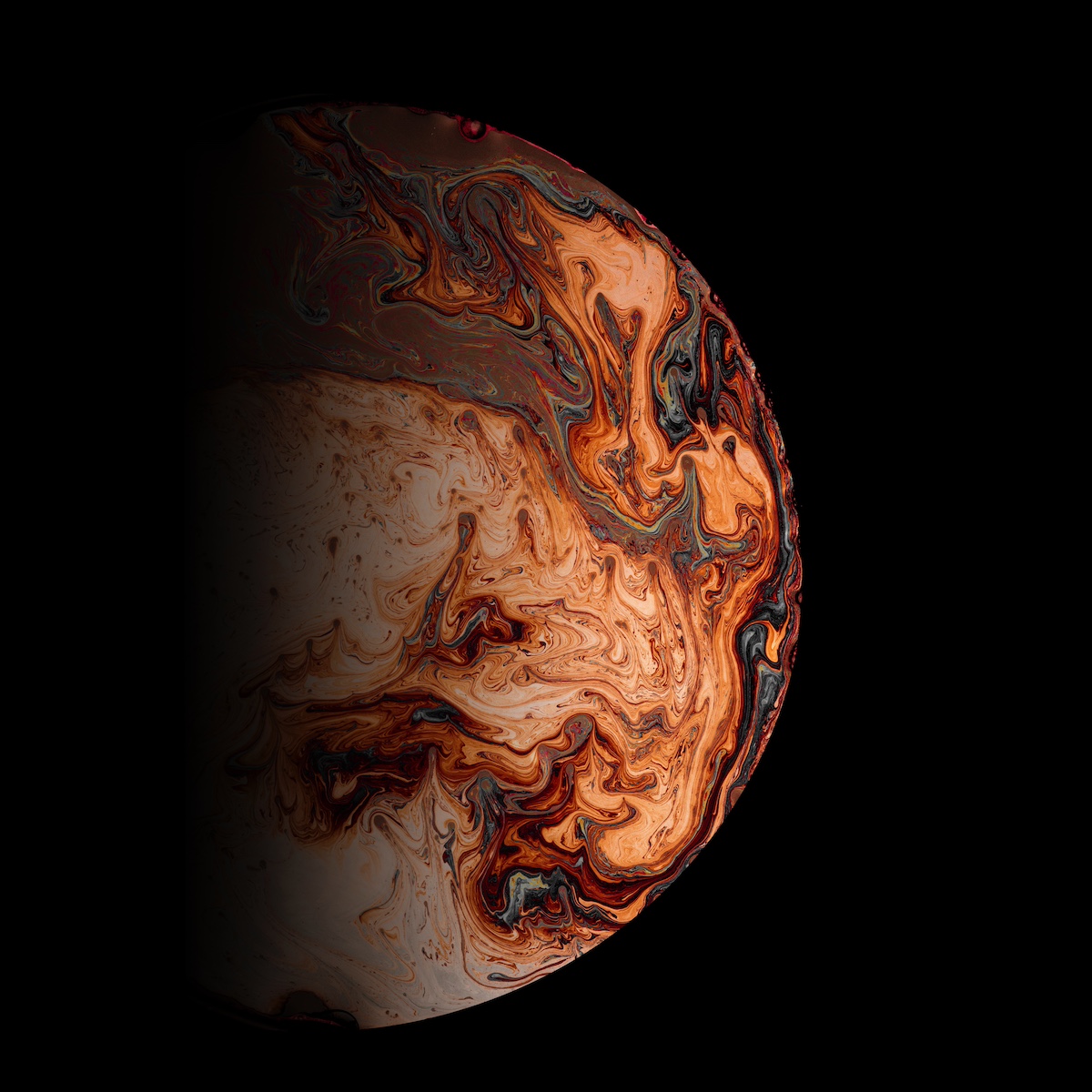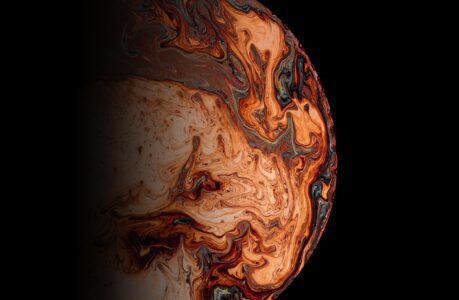Unlocking the Mysteries of the Goldilocks Zone and the Search for Life Beyond Earth
In the vast expanse of the cosmos, where countless stars twinkle in the night sky, a tantalizing question has captured the imagination of scientists and space enthusiasts alike: Are we alone in the universe? The quest to answer this age-old question has led us to investigate the Goldilocks Zone, also known as the habitable zone. In this article, we embark on a journey to understand what the Goldilocks Zone is, why it is crucial in the search for extraterrestrial life, and the exciting discoveries made so far.
The Cosmic Goldilocks Zone: A Primer
What is the Goldilocks Zone?
The Goldilocks Zone, often referred to as the habitable zone, is that elusive region surrounding a star where conditions are just right for liquid water to exist on the surface of a planet. This zone is neither too hot nor too cold, hence the nickname “Goldilocks,” inspired by the famous fairy tale. In essence, it represents the sweet spot where life as we know it could potentially thrive.

Factors Influencing the Goldilocks Zone
To define the boundaries of this habitable zone, scientists consider several crucial factors:
- Stellar Type: The type and size of the star play a pivotal role. Stars come in various sizes, from small red dwarfs to massive giants. The distance from the star where a planet can support liquid water varies depending on the star’s luminosity and temperature.
- Planet’s Size and Composition: A planet’s size and composition are vital factors. Larger planets have a more substantial gravitational pull, which can affect their ability to retain an atmosphere. Additionally, the presence of essential elements like carbon, nitrogen, and oxygen is essential for life.
- Atmospheric Conditions: The composition and density of a planet’s atmosphere also influence its potential habitability. A suitable atmosphere should be able to trap enough heat to maintain temperatures conducive to liquid water.
- Orbital Parameters: The planet’s distance from its star and the shape of its orbit are critical. A planet must be at the right distance to maintain stable temperatures. A circular orbit is often more favorable for this purpose.

The Search for Goldilocks Planets
Now that we understand the key factors, how do scientists identify planets within the Goldilocks Zone? Several methods have been developed to detect exoplanets (planets outside our solar system) and determine their potential habitability.
1. Transit Method
The transit method involves monitoring a star’s brightness for periodic dips caused by a planet passing in front of it. By analyzing these dips and their frequency, scientists can estimate the planet’s size and orbital distance. If a planet repeatedly transits its star within the habitable zone, it becomes a prime candidate for further study.
2. Radial Velocity Method
The radial velocity method relies on the gravitational tug of a planet as it orbits its star. This tug causes the star to wobble slightly, which can be detected through changes in its spectral lines. By measuring these wobbles, scientists can infer the presence of an exoplanet and estimate its mass and distance from the star.
3. Direct Imaging
In some cases, particularly with larger exoplanets farther from their stars, direct imaging becomes possible. Telescopes equipped with advanced technology can capture images of these distant worlds. This method allows scientists to study an exoplanet’s atmosphere and determine if it has the necessary conditions for life.
Examples of Goldilocks Planets
1. Kepler-186f
Kepler-186f, located approximately 500 light-years away from Earth, is often hailed as an Earth-sized exoplanet within the habitable zone of its star. It orbits a red dwarf star and has a radius similar to Earth’s, making it a promising candidate in the search for extraterrestrial life.
2. Proxima Centauri b
Proxima Centauri b, part of the Alpha Centauri star system, is another intriguing discovery. It orbits the red dwarf star Proxima Centauri, and its proximity to Earth’s solar system has made it a focal point for future interstellar exploration.

The Significance of the Goldilocks Zone
Why is the Goldilocks Zone Important?
The Goldilocks Zone is of paramount importance in the quest for life beyond Earth for several reasons:
- Water: The Elixir of Life: Liquid water is essential for life as we know it. It serves as a solvent for biochemical reactions and plays a crucial role in sustaining living organisms. The Goldilocks Zone identifies regions where this vital ingredient could exist.
- Stability and Temperate Conditions: The stability of temperature within the habitable zone is conducive to the development and sustenance of complex life forms. Extreme temperatures, whether too hot or too cold, can make life untenable.
- Possibility of Complex Molecules: The conditions within the Goldilocks Zone also support the formation of complex organic molecules, a crucial step in the emergence of life. These molecules can serve as building blocks for the development of life forms.
- Target for Exoplanet Exploration: Identifying planets within the Goldilocks Zone provides a target for future missions and telescopes designed to study exoplanets. It guides astronomers in their search for potentially habitable worlds.
The Search for Life Beyond Earth
With the Goldilocks Zone as a guide, scientists have been able to narrow down the search for extraterrestrial life. While no direct evidence of life beyond Earth has been found, the discovery of exoplanets within the habitable zone has ignited excitement and optimism within the scientific community.
The Drake Equation
The Drake Equation, developed by astronomer Frank Drake, is a formula used to estimate the number of civilizations in our galaxy capable of communicating with us. While it involves numerous variables, the concept of the Goldilocks Zone is crucial in estimating the number of potentially habitable planets.
Expanding the Horizons
Beyond the Solar System
While our own solar system has provided valuable insights into the Goldilocks Zone, the search for habitable worlds extends far beyond our cosmic neighborhood. Astronomers have identified thousands of exoplanets using various methods, and the potential for discovering Earth-like planets continues to grow.
1. The Kepler Mission
One of the most prolific missions in the search for exoplanets is NASA’s Kepler mission. Launched in 2009, Kepler has discovered thousands of exoplanets by monitoring the brightness of stars and detecting the telltale dips when planets pass in front of them. Many of these exoplanets are located within the habitable zones of their respective stars.
2. The James Webb Space Telescope
The highly anticipated James Webb Space Telescope (JWST), set to launch in the near future, promises to revolutionize our understanding of exoplanets and the Goldilocks Zone. With its advanced instruments, JWST will be able to analyze the atmospheres of exoplanets, searching for signs of habitability and even potential biosignatures.
Moons: Hidden Habitability?
While much of the focus has been on exoplanets, the moons of gas giants also hold potential for habitability. One prime example is Jupiter’s moon Europa, which is believed to have a subsurface ocean beneath its icy crust. The possibility of liquid water beneath the surface has piqued the interest of scientists, as it could potentially harbor life.
Challenges and Controversies
The Habitability Paradox
Despite the excitement surrounding the discovery of exoplanets within the Goldilocks Zone, there are significant challenges and controversies to consider.
1. Stellar Activity
Red dwarf stars, which are common in the galaxy, can be problematic for habitable zone planets. They tend to exhibit intense flares and radiation, which could strip away an exoplanet’s atmosphere and make it uninhabitable.
2. Atmospheric Composition
Determining the precise atmospheric composition of exoplanets can be challenging. While scientists can make educated guesses, the presence of certain gases, such as oxygen, doesn’t necessarily guarantee the existence of life.
3. Extremophiles on Earth
Recent discoveries of extremophiles on Earth have expanded our understanding of life’s adaptability. These microorganisms thrive in extreme environments, challenging the notion that only Earth-like conditions are suitable for life.
The Fermi Paradox
The Fermi Paradox raises another thought-provoking question: If the universe is teeming with potentially habitable planets, where are all the extraterrestrial civilizations? Despite our searches, we have yet to detect any signs of intelligent life beyond Earth, leading to various theories and speculations.
The Future of Goldilocks Zone Exploration
Exoplanet Missions
The future of Goldilocks Zone exploration is promising, with several missions and projects on the horizon.
1. The Nancy Grace Roman Space Telescope
The Nancy Grace Roman Space Telescope, set to launch in the 2020s, will further our understanding of exoplanets. It will be equipped with a coronagraph, which can block out a star’s light to reveal nearby exoplanets.
2. The LUVOIR Telescope
The Large Ultraviolet/Optical/Infrared Surveyor (LUVOIR) is a concept for a future space telescope that could revolutionize the study of exoplanets. LUVOIR would have the capability to directly image and analyze exoplanets in unprecedented detail.
Interstellar Exploration
As technology advances, the possibility of interstellar exploration becomes more feasible. Initiatives like Breakthrough Starshot aim to send small, lightweight spacecraft to nearby star systems within our lifetime. The goal is to search for habitable planets and potentially send missions to study them up close.
Conclusion
In the grand tapestry of the cosmos, the Goldilocks Zone stands as a beacon of hope in the search for extraterrestrial life. While we have not yet found definitive evidence of life beyond Earth, the discovery of exoplanets within this habitable zone has fueled our curiosity and determination to explore the unknown. As we continue to unlock the mysteries of the universe, the Goldilocks Zone remains a pivotal concept, guiding us in our quest to answer one of humanity’s most profound questions: Are we alone in the cosmos?
For more information and updates on exoplanet discoveries and space exploration, visit NASA’s Exoplanet Exploration, European Space Agency, and The Planetary Society.

